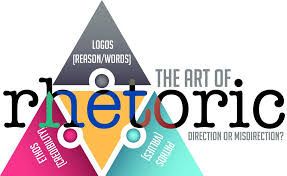
Check out Andrew Kahn’s Interactive and Annotated version of Herman Melville’s Bartleby, the Scrivener.
A New Republic of Letters in the Digital Age
In Herman Melville’s Bartleby, the Scrivener: A Story of Wall Street (1853), Melville self-reflexively critiques the life and death of reading. Melville’s titular character Bartleby’s dead letter-reading and life-writing (or not-writing, because, after all, Bartleby “prefers not to”) criticize national ethics of expression and representation. The novella can also be read as a commentary on Melville’s own anxieties about reading the changing literary and social forms of mid-nineteenth-century America.
Moving away from Melville’s dead-letter office, and perhaps, into today’s new digital republic of letters, I find myself thinking about Melville when refiguring the ways I apprehend and teach literary form. As teachers and scholars, it has become increasingly important to enrich reading and writing instruction by teaching texts anew: 21st-century learning requires an emergence within the moving texts and contexts that define our contemporary, technological society. How can we account for the wide swath of changing literary forms and social practices? What is the role of new media literacy in the classroom?
A Rhetorically-Flexible Mind

Aristotle’s Rhetorical Triangle: Is it changing in the digital age?
As someone who is studying the historical, political, and cultural aspects of literature, I attempt to incorporate reading ethics and literacy skills regularly into the classroom. New media literacy practice supports both constructivist and associative thinking, recognizing shifting modes of poiesis that rely on personal evaluation. Trying to manage and teach the word/image dialectic that has engulfed our world creates opportunities for educators to foster the engagement of a “rhetorically-flexible” mind. A rhetorically-flexible student questions the discursive communications of literary discourses, visual discourses, and critical scholarship. As a result, students are more likely to recognize their ethical roles as readers in a society where fact-checking has become the norm.
So, what does the new media classroom look like?
Emerging studies cite multiple ways to incorporate into the classroom new media technologies that include social media, digital visualizations, mind mapping, multi-platform presentation tools, storyboards, wikis, blogs, web pages, etc. Through these varied media interactions, students recognize the shifts in attention that Izadora Zubek calls “the logics of distraction.” Zubek advocates that the responsible and political reader must move beyond attention in today’s society, recognizing vision as a metaphor for awareness, and then, as a call to action.

What’s new about new media?
By engaging in new media interactions, students develop media skills and literacies which scholars Cheryl Ball and Ryan Moeller explore in this webtext. Ball and Moeller advocate for what they call “a new media university” which focuses on texts that introduce new media topoi (the components of a text) which can change the ways students engage in their learning processes within the university. This emphasis on the flexibility of reading-writing connections teaches multiple literacies within a global platform. Therefore, there is a reliance on what Tara McPherson calls “the multimedia scholar,” who is able to “explore new forms of literacy that include authoring and analyzing visual, aural, dynamic and interactive media.” However, educators also have to keep in mind the disadvantages of using technology too regularly in the classroom. Leading media researcher from New York University, Professor Clay Shirky, has banned the use of technology in his classroom, as he outlines in this Washington Post article. He teaches the emotional, intellectual, and creative effects of technology without actually using it. So, perhaps, the challenge that Shirky recognizes is the need for educators to find a manageable give-and-take, and a way to teach new media while still recognizing the differences between the human and the machine.
Moving Language, Moving Forms, Moving Selves

Jorge Luis Borges’s “Library of Babel.” Read it here.
Recently, I taught an EGL. 192 Introduction to Fiction class subtitled, “Moving Language, Moving Forms, Moving Selves.” One goal of my class was to put students into unfamiliar reading situations in order to have them think about the biases of their reading practices. We read a range of texts that spanned the twentieth and twenty-first centuries including novels, novellas, poems, graphic novels, films, digital texts, digital images, etc. In essence, we tried to create our own Borgesian “Library of Babel” that moved without and within the digital world.

Nella Larsen’s Passing (2004 Penguin Ed.)
One example of our engagement with multiple literacies occurred when reading Nella Larsen’s novella Passing (1929). We began by recognizing the identity politics within the novella itself, using traditional close-reading techniques in order to unravel how race, class, and gender are fluctuating markers of personal and public identity. Specifically, we analyzed the ambiguity of narrative point-of-view, and how Larsen muddles the dialogue and narratives of Irene Redfield and Claire Kendry. However, then we shifted our lens, and we discussed Larsen’s novella by mapping the places and spaces that the novel charts. Using Google Tour Builder, we made a digital map of the novella, discussing how space and character merge as we analyzed interactions between dialogue and setting. This activity allowed students to think about the ways in which places themselves becomes marked by identity categories. It also fueled some additional class activities that opened up questions about how we read others based on where we are, what we do, and whom we associate with. Through a visualization of the novel’s settings, we were able to reinforce our textual analysis while experiencing a heightened reading of the novella itself.
This led to an investigation of contemporary race and identity politics, and we analyzed the media coverage of former N.A.A.C.P. member, Rachel Dolezal. We discussed the controversy and celebrity surrounding Dolezal’s identity politics. A few students recognized how media coverage and its information overflow exploit notions of democracy. We asked ourselves, how can we evaluate media sources in a “post-truth” world? How can we determine “fake news” from “real news”? We looked no further than Stony Brook’s own Center for News Media for help, discussing ways to track news sources by also utilizing some of these ideas from The New York Times.

Claudia Rankine’s Citizen: An American Lyric (2014)
Finally, we linked some of these essential questions with excerpts from Claudia Rankine’s long prose poem Citizen: An American Lyric (2014) which marries prose, poetry, and images. Reading Rankine gave us the opportunity to interpret contemporary news and issues by engaging with images and lyric poetry. Rankine’s digital images and lyrical reportage emphasize the metaphoric extension of the image while also framing the lyric as a political form. This activity allowed us to confront questions about the spectacle of the image, the emphasis of diction, the tensions that render the word-as-image, and how we, ourselves, must become responsible Americans citizens through our readings of the world—which is one of Rankine’s aims within the text.
The Danger of a Single Story
I’m still working out some of the kinks of this class by thinking about student responses and student collaboration. Yet, I think that even by changing the ways I teach literary form and by engaging with contemporary media and information, I’m immersing myself within teaching practices that will constantly reinvent themselves, while I reinvent myself too.
If I had to advocate for the direct instruction of multiple literacies in the college classroom, I would say that literacy instruction and evaluation emphasize what author Chimamanda Ngozi Adichie calls “the danger of a single story.” Adichie’s TedTalk was the way that we ended the semester, and while we did analyze her speech for its rhetorical appeals; more importantly, we listened to her learning and life ethics while she stressed the imperative of evaluating the swirling stories and voices that move around us. Adichie emphasizes the role of the responsible and ethical reader. It is because of this that I attempt to teach literacy through varied contexts and media; and maybe, (just maybe) I’m not as scared of our changing republic of letters as Melville was.
Web Resources
- The New York Times: Lesson Ideas for evaluating media sources from The New York Times
- Stony Brook Center for News Media: http://www.centerfornewsliteracy.org/what-is-news-literacy/
- CUNY Academic Commons: https://wiki.commons.gc.cuny.edu/The_CUNY_Digital_Humanities_Resource_Guide/
- Center for Media Literacy: http://www.medialit.org/how-teach-media-literacy
- Women’s Media Center: http://www.womensmediacenter.com/
- Creating Multimodal Texts: https://creatingmultimodaltexts.com/
- Teaching with online tools; guide for educators at multiple levels: http://www.schrockguide.net/online-tools.html
Works Cited
- Ball, C., & Moeller, R. “Reinventing the possibilities: Academic literacy and new media.” The Fibreculture Journal, 2007. http://ten.fibreculturejournal.org/fcj-062-reinventing-the-possibilities-academic-literacy-and-new-media/
- Cordova, N. I. “Invention, ethos, and new media in the rhetoric classroom: The storyboard as exemplary genre.” Multimodal Literacies and Emerging Genres, edited by T. Bowen and C. Whithaus, U. of Pittsburg P, 2013, pp. 143-63.
- Jenkins, H. Convergence culture: Where old and new media collide. New York University Press, 2008.
- McPherson, Tara. “Introduction: Media Studies and the Digital Humanities.” Cinema Journal, vol. 48, no. 2, Winter 2009, pp. 119-123. ProjectMUSE, https://muse.jhu.edu/article/257016/pdf
- Zubek, I. “Open your eyes: Globalization and the politics of attention.” E-International Relations: Students, 29 March 2015, http://www.e-ir.info/2015/03/29/open-your-eyes-globalization-and-the-politics-of-attention Accessed on 10 March 2017.
